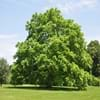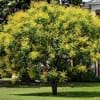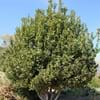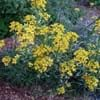Life Span
Biennial
Annual and Perennial
Origin
North America, United States, Northeastern United States, Mid-Atlantic United States, North-Central United States, Central United States, Canada
South America, Brazil
Types
Not Available
Not Available
Habitat
Anthropogenic, Floodplains, Forests
Dry areas, Forest edges
USDA Hardiness Zone
3-9
9-12
Sunset Zone
1a, 1b, 2a, 2b, 3a, 3b, 4, 5, 6, 7, 8, 9, 14, 15, 16, 17
H1, 13, 16, 17, 18, 19, 20, 21, 22, 23, 24
Habit
Oval or Rounded
Oval or Rounded
Flower Color
Yellow green
Yellow, Lemon yellow
Flower Color Modifier
Bicolor
Bicolor
Fruit Color
Green, Brown
Brown, Sandy Brown
Leaf Color in Spring
Light Green
Green, Light Green
Leaf Color in Summer
Green, Dark Green
Green, Gray Green
Leaf Color in Fall
Yellow, Gold
Green, Gray Green
Leaf Color in Winter
Not Available
Not Available
Leaf Shape
Pinnate
Oblong
Plant Season
Spring, Summer, Fall
Spring, Winter
Sunlight
Full Sun
Full Sun
Type of Soil
Clay, Loam
Clay, Loam, Sand
The pH of Soil
Acidic, Neutral, Alkaline
Acidic, Neutral, Alkaline
Soil Drainage
Well drained
Well drained
Bloom Time
Late Spring, Early Summer
Early Spring, Late Winter
Tolerances
Not Available
Drought
Where to Plant?
Ground
Ground
How to Plant?
Seedlings
Seedlings, Seperation, Vegetative Reproduction
Plant Maintenance
Medium
Medium
Watering Requirements
Average Water Needs, Do Not over Water, Requires regular watering
Keep the ground moist but not water-logged, Requires watering in the growing season, Water more in summer, Water occasionally
In Summer
Lots of watering
Lots of watering
In Spring
Moderate
Moderate
In Winter
Average Water
Average Water
Soil pH
Acidic, Neutral, Alkaline
Acidic, Neutral, Alkaline
Soil Type
Clay, Loam
Clay, Loam, Sand
Soil Drainage Capacity
Well drained
Well drained
Sun Exposure
Full Sun
Full Sun
Pruning
Remove damaged leaves, Remove dead branches, Remove dead leaves
Cut leaves after fall, Pinch or prune as they grow to promote branching and bushiness, Prune before Winter, Prune when plant is dormant, Remove dead leaves, Remove deadheads
Fertilizers
All-Purpose Liquid Fertilizer
All-Purpose Liquid Fertilizer
Pests and Diseases
Red blotch
Pests and diseases free, Red blotch
Plant Tolerance
Not Available
Drought
Flowers
Insignificant
Showy
Flower Petal Number
Not Available
Single
Fragrant Leaf
Not Available
No
Fragrant Bark/Stem
Not Available
No
Foliage Texture
Coarse
Medium
Foliage Sheen
Matte
Glossy
Attracts
Birds, Squirrels
Not Available
Allergy
Gastric, Pollen
no allergic reactions
Aesthetic Uses
Not Used For Aesthetic Purpose
Showy Purposes
Beauty Benefits
Good for skin
Not Available
Environmental Uses
Air purification, Shadow Tree
Air purification
Medicinal Uses
Dysentry, Intestinal irritations, Small pox, Stomach pain
No Medicinal Use
Part of Plant Used
Sap, Seeds
Leaves, Wood
Other Uses
Application in Furniture, Decorative veneers, flooring, paneling, Herbicide
Wood is used for making furniture, Wood is used in construction
Used As Indoor Plant
No
No
Used As Outdoor Plant
Yes
Yes
Garden Design
Edible, Shade Trees
Feature Plant, Shade Trees, Street Trees, Tropical
Botanical Name
JUGLANS cinerea
HANDROANTHUS billbergii
Common Name
Butternut
Guayacán, Tabebuia
In Hindi
Butternut Tree
Tabebuia
In German
Butternut Baum
Tabebuia
In French
noyer cendré
Tabebuia
In Spanish
árbol de nogal
Tabebuia
In Greek
Butternut Δέντρο
Tabebuia
In Portuguese
Árvore Butternut
Tabebuia
In Polish
butternut Drzewo
Tabebuia
In Latin
Butternut ligno
Tabebuia
Phylum
Magnoliophyta
Not Available
Class
Magnoliopsida
Not Available
Order
Juglandales
Lamiales
Family
Juglandaceae
Bignoniaceae
Clade
Angiosperms, Eudicots, Rosids
Angiosperms, Asterids, Eudicots
Tribe
Not Available
Not Available
Subfamily
Not Available
Not Available
Number of Species
Not Available
Importance of Butternut Tree and Tabebuia
Want to have the most appropriate plant for your garden? You might want to know the importance of Butternut Tree and Tabebuia. Basically, these two plants vary in many aspects. Compare Butternut Tree and Tabebuia as they differ in many characteristics such as their life, care, benefits, facts, etc. Every gardener must at least have the slightest clue about the plants he wants to plant in his garden. Compare their benefits, which differ in many ways like facts and uses. The medicinal use of Butternut Tree is Dysentry, Intestinal irritations, Small pox and Stomach pain whereas of Tabebuia is No Medicinal Use. Butternut Tree has beauty benefits as follows: Good for skin while Tabebuia has beauty benefits as follows: Good for skin.
Compare Facts of Butternut Tree vs Tabebuia
How to choose the best garden plant for your garden depending upon its facts? Here garden plant comparison will help you to solve this query. Compare the facts of Butternut Tree vs Tabebuia and know which one to choose. As garden plants have benefits and other uses, allergy is also a major drawback of plants for some people. Allergic reactions of Butternut Tree are Gastric and Pollen whereas of Tabebuia have no allergic reactions respectively. Having a fruit bearing plant in your garden can be a plus point of your garden. Butternut Tree has showy fruits and Tabebuia has no showy fruits. Also Butternut Tree is not flowering and Tabebuia is not flowering . You can compare Butternut Tree and Tabebuia facts and facts of other plants too.





